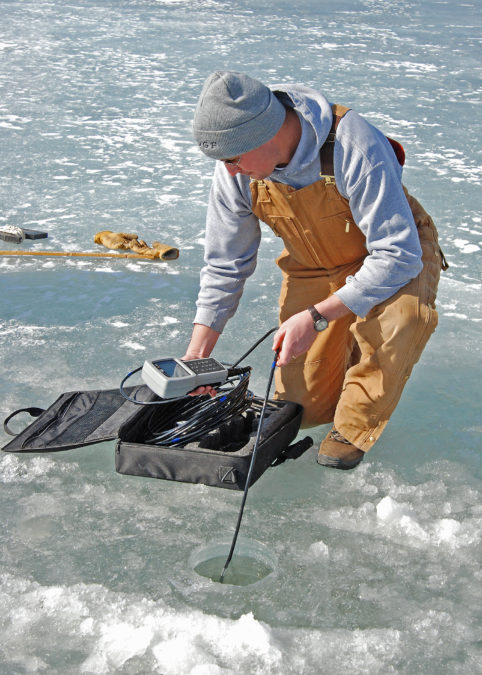It doesn’t take a biology or chemistry degree to understand fish need water, and it’s no secret the expanded wet cycle since 1993 was the key ingredient in creating a modern version of the good old days in terms of fishing in North Dakota.
But reduced snowpack and consequently less fresh spring run-off the last couple of winters, is mostly an unwelcomed change when it comes to fisheries management.
Fisheries biologists point to this as a reality of life on the prairie. Water levels are seldom stable from one year to the next. While the lack of moisture continues, in the short term that isn’t necessarily bad. The last two mild winters without much snow likely helped some susceptible lakes survive without significant winterkill.
On the other hand, deep snow on top of thick ice increases winterkill potential for lakes that are on the edge, but rising water levels following such winters is a good thing for all lakes in the state.
Winterkill describes a situation when water no longer contains enough dissolved oxygen for fish to survive. Without oxygen, fish suffocate, just as they do when you take them out of water.
Aquatic vegetation produces dissolved oxygen through the respiration process of photosynthesis, just as land-based plants release oxygen into the air. Fish then process oxygen with their gills.
Of course, sunlight is needed to start the photosynthesis process, and during some winters, the combination of thick ice and snow on top of it prevents sunlight from reaching aquatic plants. At some point, lack of sunlight kills aquatic plants, so they no longer release oxygen into the water. To make matters worse, dead, decomposing plants actually consume oxygen.
If the water’s oxygen content falls low enough, fish start to die. And when that happens, their decomposition uses additional oxygen.
Winterkill has been a limiting factor off and on some North Dakota waters for as long as we’ve had lakes, fish and fishing. It’s one of many challenges North Dakota Game and Fish biologists deal with.
It’s a word that draws winces from anglers who were banking on another year of successful fishing in a lake that maybe wasn’t big enough or deep enough, or didn’t have the right aquatic habitat to sustain fish through a winter that produces thick ice and heavy snow.
Lakes that suffer a die-off can be restocked and once again become productive fishing waters. But every so often, maybe once every 5-15 years, the right combination of circumstances come together to threaten that fishery.
The limiting factor is that Game and Fish currently manages some 425 lakes. At the start of each winter it’s impossible to tell which ones, if any, will succumb to low dissolved oxygen.
Biologists monitor dissolved oxygen content in suspect lakes during most winters. There is really no management tool available to reverse low oxygen once it is discovered. All biologists can do, really, is go back to that lake once the ice goes out and set some nets to determine if the fish kill is just partial, or total.
Lakes with low oxygen readings were not much of an issue this year, but biologists don’t get to all of them, so anyone who notices concentrations of dead fish anywhere should report that to Game and Fish.
If the state stays dry this summer, and a severe winter comes along, the situation could be a bit more serious come this time next year.



